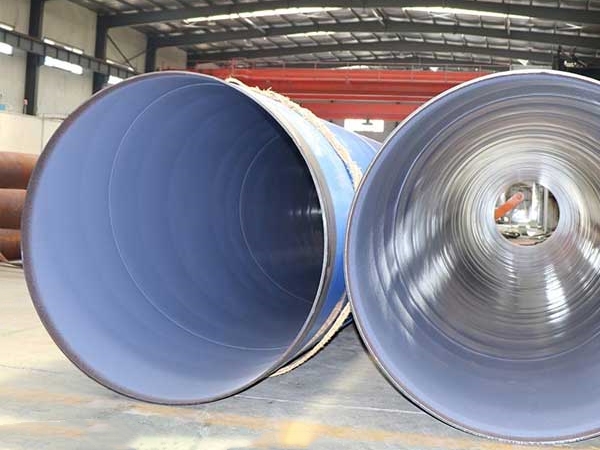The production process of 2 /3 PE (Polyethylene) coated pipes involves several steps to ensure that a layer of polyethylene is applied to the surface of a metal pipe for corrosion protection and other purposes. PE coating is commonly used in the oil and gas industry, water distribution, and various industrial applications. Here is an overview of the typical production process for PE coated pipes.

Selection of Pipe Material:
The process starts with selecting the base metal pipe, which is often made of steel. The choice of material depends on the specific application and the environmental conditions the pipe will be exposed to.
Surface Preparation:
The surface of the metal pipe must be cleaned and prepared to ensure good adhesion of the PE coating. This typically involves removing any rust, scale, or contaminants from the surface through processes like sandblasting, shot blasting, or chemical cleaning.
Primer Application (optional):
In some cases, a primer layer is applied to the cleaned metal surface before the PE coating. The primer helps improve the adhesion of the PE layer to the metal surface.
Extrusion Coating:
The main step in the PE coating process is extrusion coating. In this step, a machine called an extruder is used to melt and extrude a layer of polyethylene onto the prepared surface of the metal pipe. The extruder applies the PE as a molten layer, which adheres to the pipe's surface as it cools and solidifies. The thickness of the PE coating can vary depending on the requirements.
Cooling:
After the polyethylene has been applied, the coated pipe is typically passed through a cooling chamber or cooled using a water spray to solidify and set the PE layer.
Quality Control:
Various quality control measures are taken throughout the process to ensure that the coating is applied evenly and meets the required specifications. This may involve checking the thickness of the coating, inspecting for any defects, and conducting adhesion tests.
Cutting and Inspection:
The coated pipes are cut to the desired length and inspected for any surface defects, irregularities, or imperfections.
Testing:
PE coated pipes may undergo various tests to ensure their integrity and performance. Common tests include hydrostatic testing to check for leaks and pressure resistance, as well as visual and dimensional inspections.
Packaging and Shipping:
Once the coated pipes have passed all quality checks and tests, they are packaged for shipping to their intended destination.
It's important to note that the specific details of the production process may vary depending on the manufacturer, the type of PE coating (e.g., single-layer or multi-layer), and the intended use of the coated pipes. Additionally, safety precautions and environmental considerations are essential throughout the production process, especially when dealing with molten materials and potentially hazardous substances.